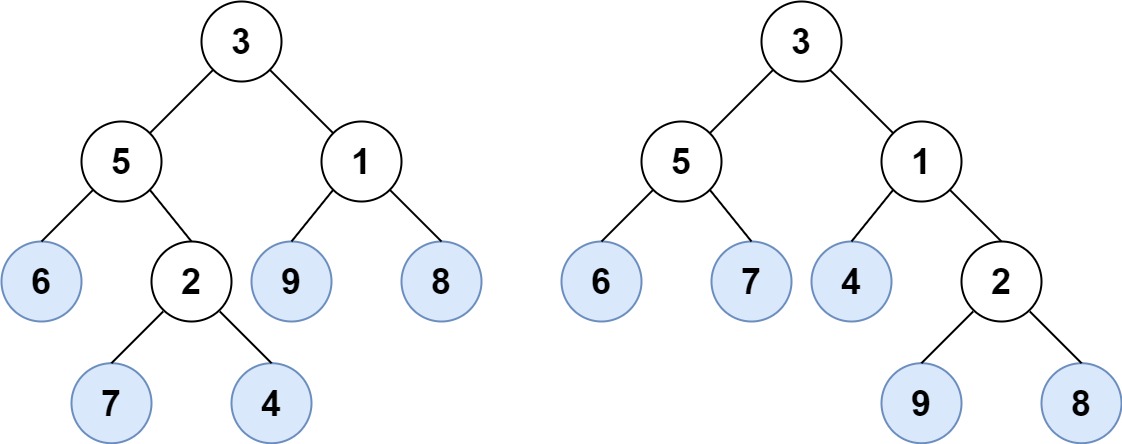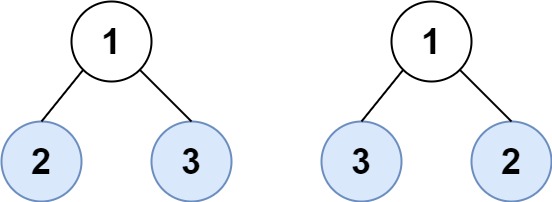LeetCode Exercise

This is my LeetCode exercise.
You can see all question I did here.
tags: leetcode easy Tree Depth-First Search Binary Tree
872. Leaf-Similar Trees
Description
Consider all the leaves of a binary tree, from left to right order, the values of those leaves form a leaf value sequence.

For example, in the given tree above, the leaf value sequence is (6, 7, 4, 9, 8).
Two binary trees are considered leaf-similar if their leaf value sequence is the same.
Return true if and only if the two given trees with head nodes root1 and root2 are leaf-similar.
Examples
Example 1:
 Input: root1 = [3,5,1,6,2,9,8,null,null,7,4], root2 = [3,5,1,6,7,4,2,null,null,null,null,null,null,9,8]
Input: root1 = [3,5,1,6,2,9,8,null,null,7,4], root2 = [3,5,1,6,7,4,2,null,null,null,null,null,null,9,8]
Output: true
Example 2:
 Input: root1 = [1,2,3], root2 = [1,3,2]
Input: root1 = [1,2,3], root2 = [1,3,2]
Output: false
Constraints:
- The number of nodes in each tree will be in the range
[1, 200]. - Both of the given trees will have values in the range
[0, 200].
Code
/**
* Definition for a binary tree node.
* struct TreeNode {
* int val;
* struct TreeNode *left;
* struct TreeNode *right;
* };
*/
typedef struct TreeNode* TNODE;
typedef struct leafString {
int val;
struct leafString* next;
} LSTR;
void leafChecker(TNODE root, LSTR** lstr) {
if (!root->left && !root->right) {
// Create new node
LSTR* newNode = (LSTR*)malloc(sizeof(LSTR));
newNode->val = root->val;
newNode->next = NULL;
// Get the pointer of the last node
LSTR *pre = NULL, *tmp = *lstr;
while (tmp != NULL) {
pre = tmp;
tmp = tmp->next;
}
// Append new node
if (pre)
pre->next = newNode;
else
*lstr = newNode;
return;
}
// If child of tree is not null
if (root->left)
leafChecker(root->left, lstr);
if (root->right)
leafChecker(root->right, lstr);
return;
}
bool leafSimilar(struct TreeNode* root1, struct TreeNode* root2) {
// If only one tree is empty, return false
if ((!root1 && root2) || (root1 && !root2))
return false;
LSTR *lstr1 = NULL, *lstr2 = NULL;
// In-order DFS search
// Using address of pointer for null pointer assignment
leafChecker(root1, &lstr1);
leafChecker(root2, &lstr2);
// Comparing leaf list
while (lstr1 && lstr2) {
if (lstr1->val != lstr2->val)
return false;
lstr1 = lstr1->next;
lstr2 = lstr2->next;
}
if (lstr1 || lstr2)
return false;
return true;
}
Complexity
|Space |Time | |- |- | |$O(T_1 + T_2)$|$O(T_1 + T_2)$|
- $T_i, i\in {1, 2}$ : Number of nodes in root
Result
- Runtime : 0ms, 100%
- Memory : 6.3 MB, 50%